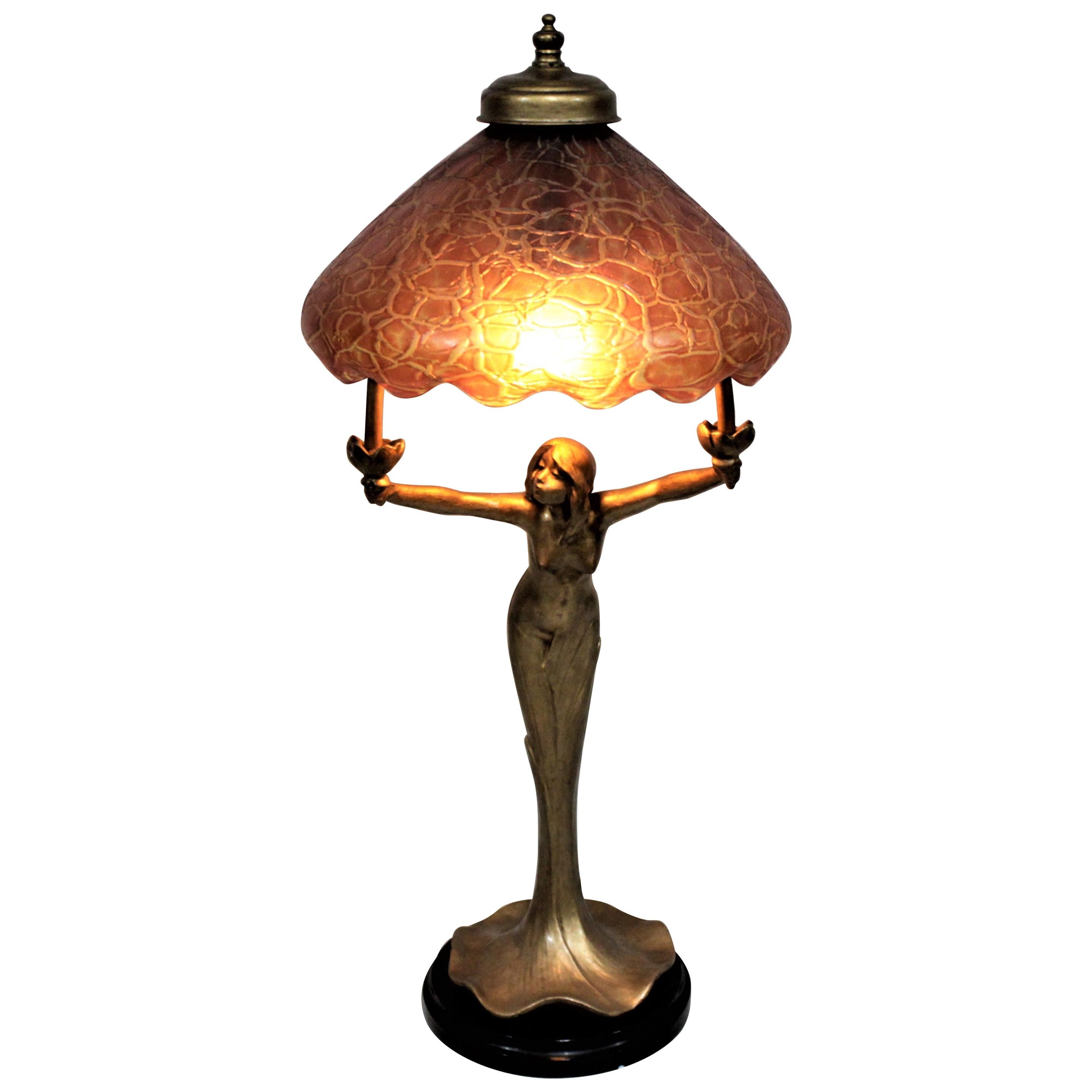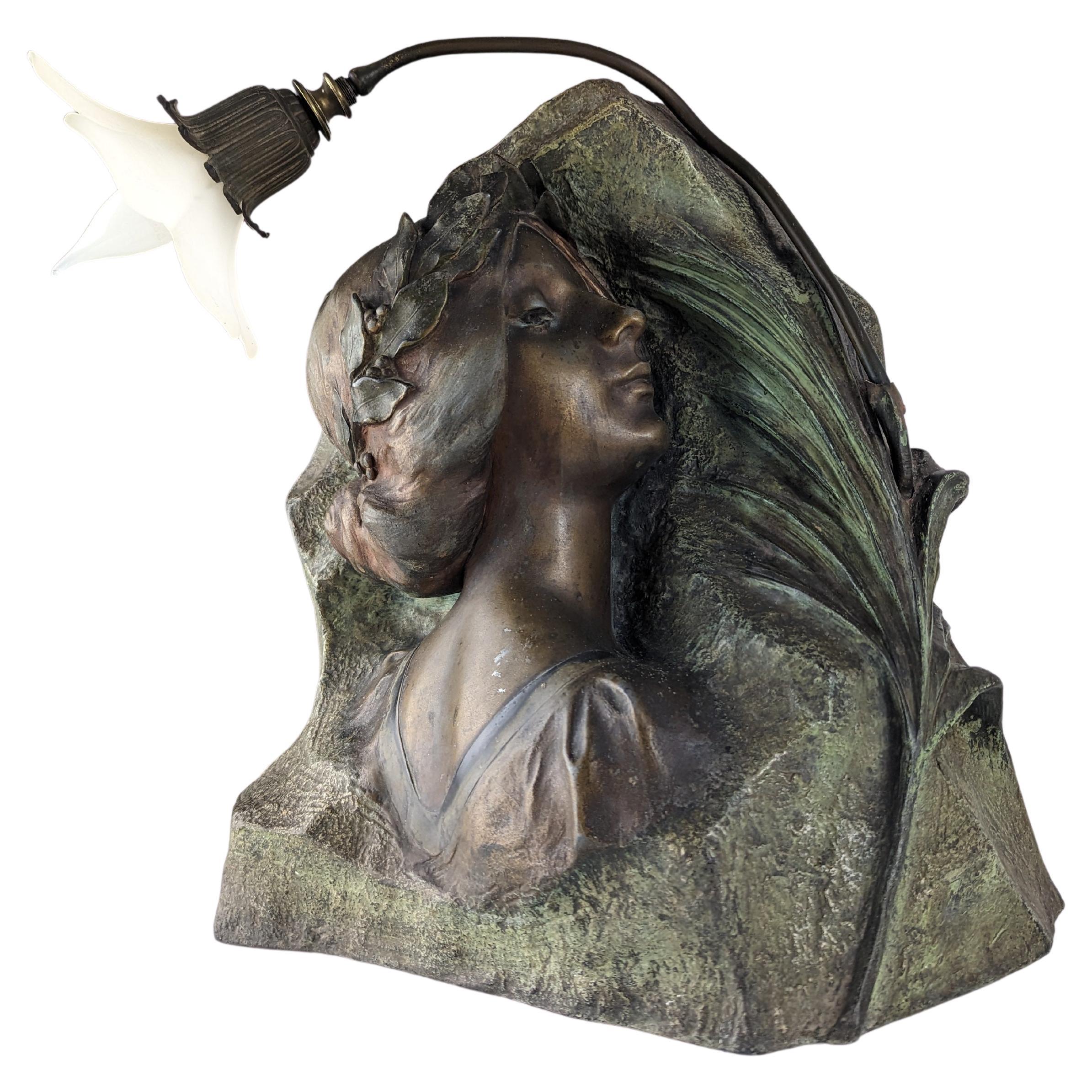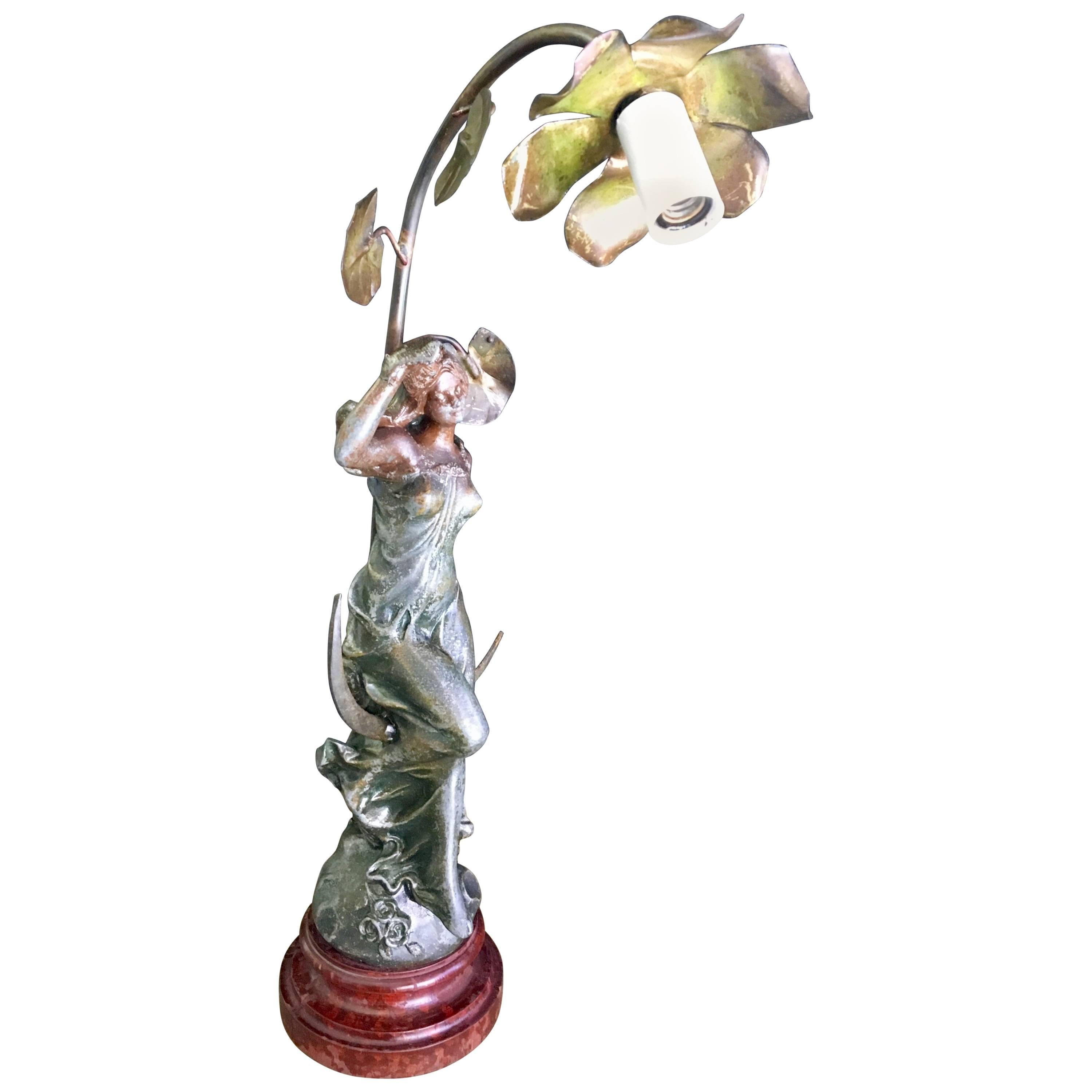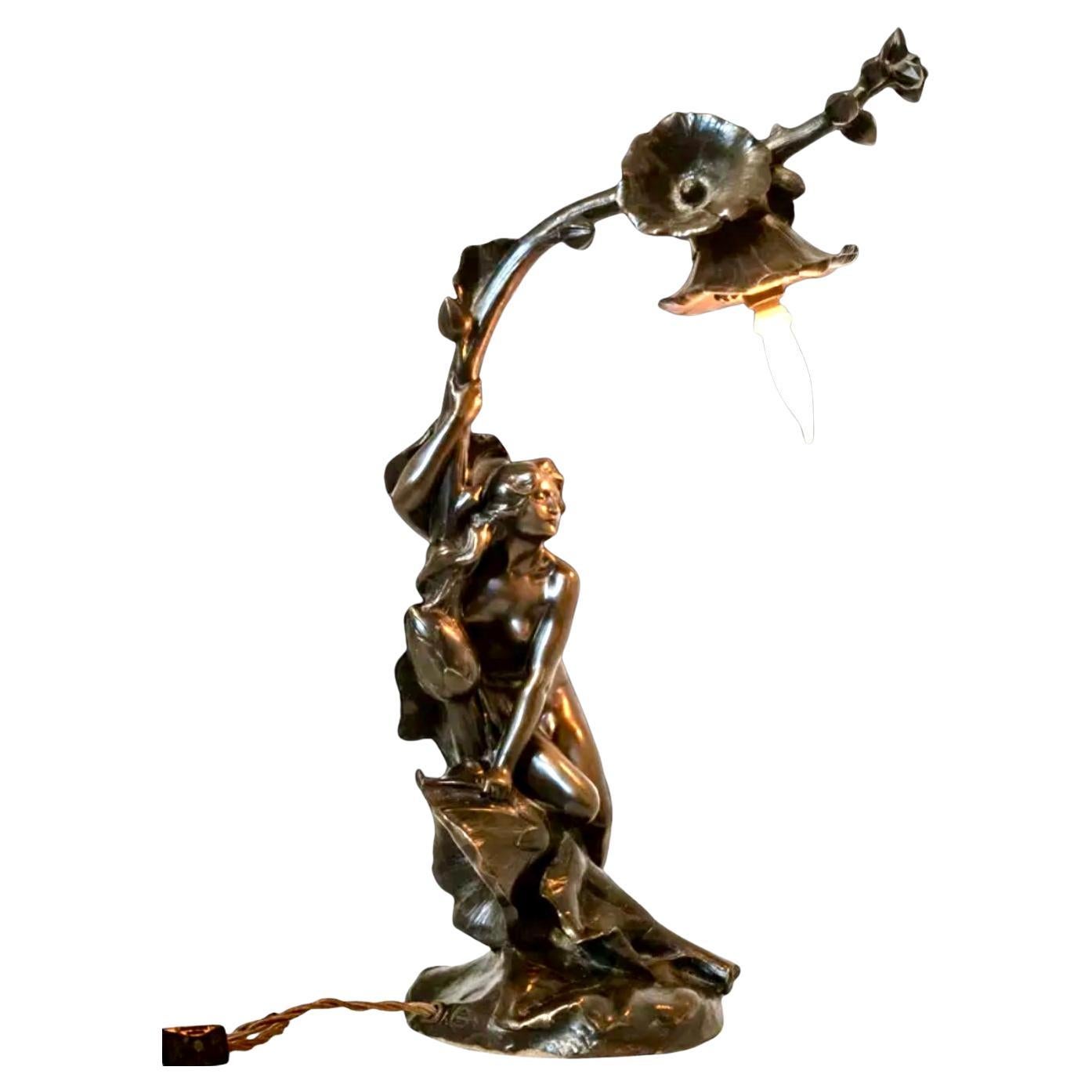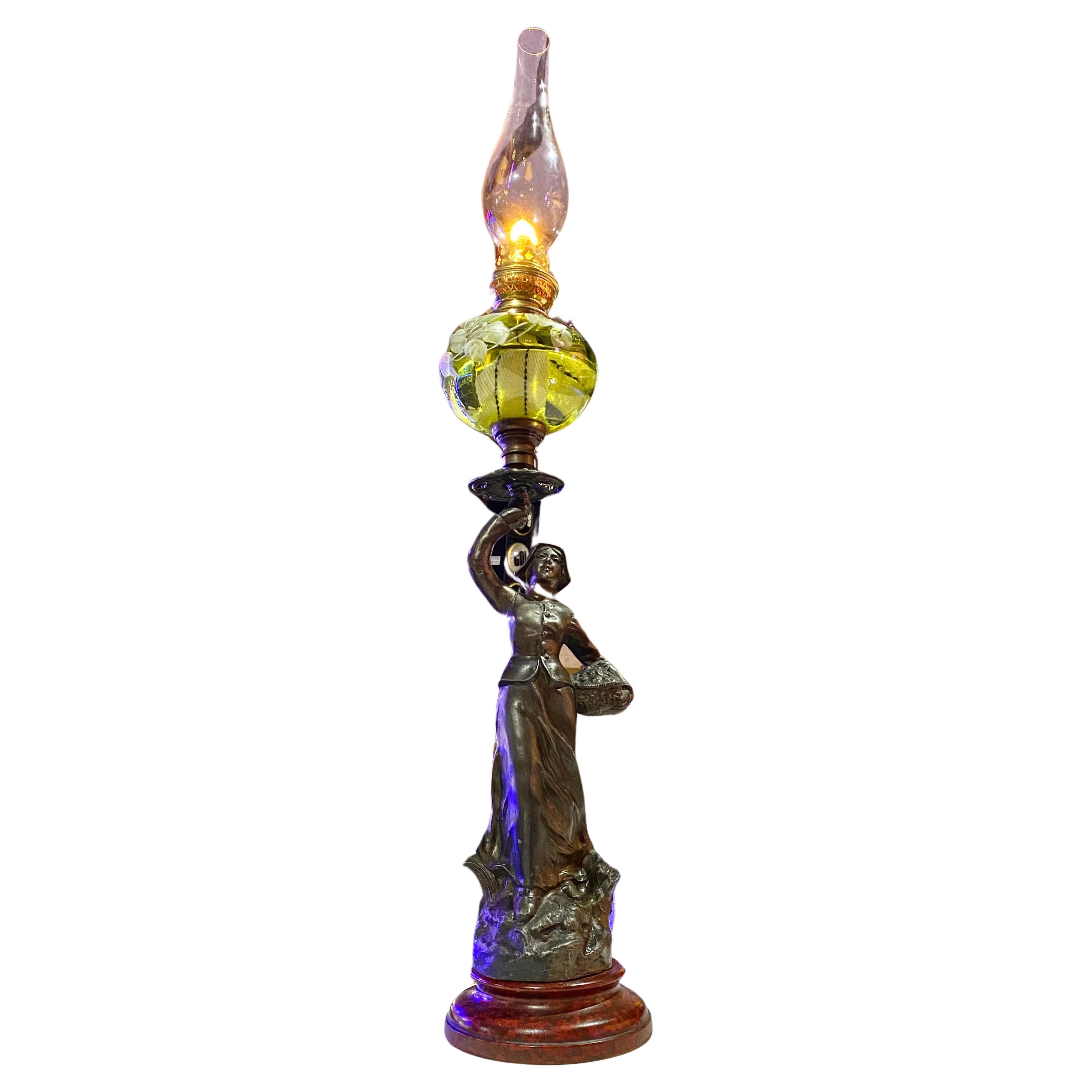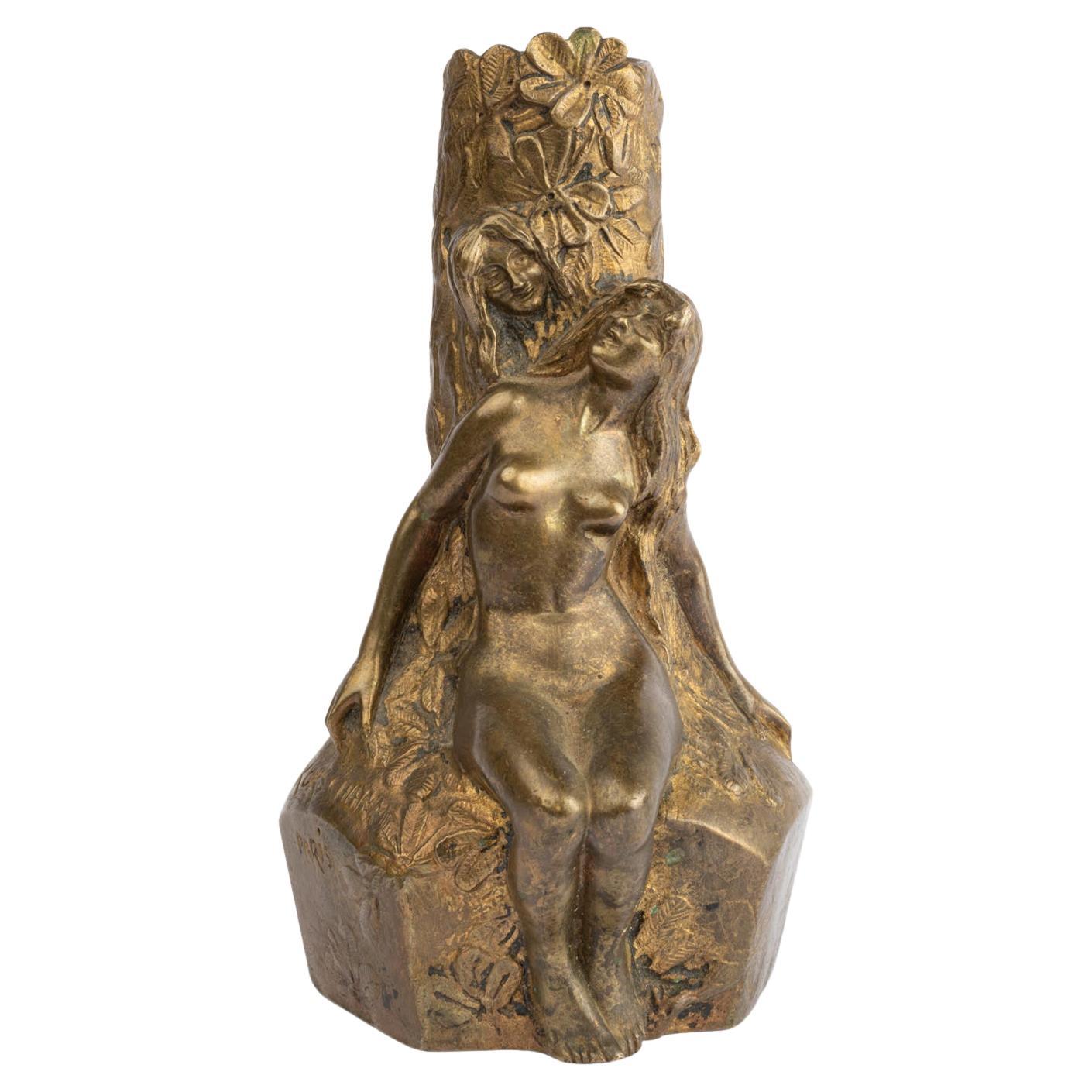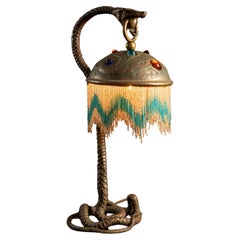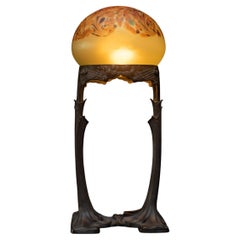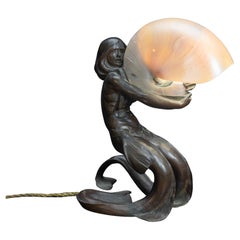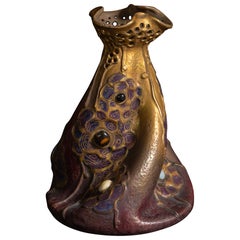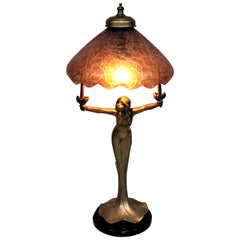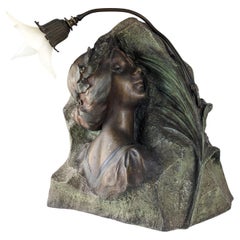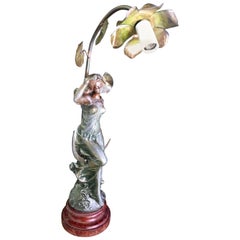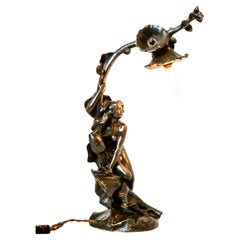Items Similar to Art Nouveau Maiden Lamp by Lajos Mack for Zsolnay
Want more images or videos?
Request additional images or videos from the seller
1 of 18
Art Nouveau Maiden Lamp by Lajos Mack for Zsolnay
$42,000
£31,822.97
€36,514.33
CA$59,100.78
A$64,968.02
CHF 34,144.21
MX$788,948.34
NOK 425,940.43
SEK 403,548.60
DKK 272,515.69
About the Item
Established in 1853 by Miklós Zsolnay, Zsolnay began as a small business producing basic stoneware and earthenware. Ten years later Miklós’ son, Vilmos, joined the company and led it to worldwide recognition at international exhibitions including the 1878 World Fair in Paris, where they received a Grand Prix for their ceramics and glazes. Zsolnay reached even greater heights after 1893 when they introduced their now-famous “eosin” glaze. Named after the Greek goddess of dawn, Eos, this lustrous and iridescent glaze can appear to be enamel, metal, or even glass and the colors morph depending on the angle, strength, and type of light applied to the surface. In the last decade of the 19th century, riding a high of economic prosperity and political stability in Hungary, the firm hired many Art Nouveau and Jugendstil artists to create spectacular sculptural and painterly vases and vessels.
- Rago
- Creator:Zsolnay (Workshop/Studio),Lajos Mack (Artist)
- Dimensions:Height: 23.5 in (59.69 cm)Width: 8 in (20.32 cm)Depth: 10 in (25.4 cm)
- Power Source:Plug-in
- Voltage:110-150v
- Style:Art Nouveau (Of the Period)
- Materials and Techniques:Earthenware,Glazed
- Place of Origin:
- Period:1900-1909
- Date of Manufacture:1900-1901
- Condition:Rewired: Partially rewired. Minor surface scratches.
- Seller Location:Chicago, US
- Reference Number:1stDibs: LU7300234436392
About the Seller
5.0
Vetted Professional Seller
Every seller passes strict standards for authenticity and reliability
1stDibs seller since 2022
18 sales on 1stDibs
Typical response time: 9 hours
- ShippingRetrieving quote...Shipping from: Chicago, US
- Return Policy
Authenticity Guarantee
In the unlikely event there’s an issue with an item’s authenticity, contact us within 1 year for a full refund. DetailsMoney-Back Guarantee
If your item is not as described, is damaged in transit, or does not arrive, contact us within 7 days for a full refund. Details24-Hour Cancellation
You have a 24-hour grace period in which to reconsider your purchase, with no questions asked.Vetted Professional Sellers
Our world-class sellers must adhere to strict standards for service and quality, maintaining the integrity of our listings.Price-Match Guarantee
If you find that a seller listed the same item for a lower price elsewhere, we’ll match it.Trusted Global Delivery
Our best-in-class carrier network provides specialized shipping options worldwide, including custom delivery.More From This Seller
View AllArt Nouveau Viper Lamp by Unknown French Artist
Located in Chicago, US
Little is known about the origins of this amazing lamp, apart from it being from France, circa 1900.
Note: We highly recommend shipping through 1stDibs for its cost effectiveness, f...
Category
Antique Early 1900s French Art Nouveau Inkwells
Materials
Bronze, Brass
Secessionist Bronze & Balloon-Glass Table Lamp by Gustav Gurschner, Johann Loetz
By Gustave Gurschner, Johann Lötz Witwe
Located in Chicago, US
Art Nouveau BALLOON GLASS TABLE LAMP, by Gustav Gurschner and Johann Loetz Witwe, c. 1904, the glass dome in a frosted yellow iridescent ground is crow...
Category
Antique Early 1900s Austrian Art Nouveau Table Lamps
Materials
Brass
Secessionist Bronze Mermaid Shell Lamp by Gustav Gurschner
By Gustave Gurschner
Located in Chicago, US
GUSTAV GURSCHNER (Austrian, 1873-1970), a sculptor, attended the School of Applied Arts in Vienna in 1888. Working under several artists, his time in Paris in 1897 proved to be most ...
Category
Antique Early 1900s Austrian Art Nouveau Table Lamps
Materials
Brass, Wire
Art Nouveau Gres Bijou Twist Vase by RStK Amphora w/Gilding and Glass Cabachons
By Reissner Stellmacher & Kessel
Located in Chicago, US
Model #3367
Riessner, Stellmacher and Kessel (RSt&K), consistently marked pieces with the tradename “Amphora” by the late 1890s and became known by that name. The Amphora pottery fa...
Category
Antique Early 1900s Austrian Art Nouveau Vases
Materials
Earthenware, Glass
Important Art Nouveau Zsolnay Flask by Lajos Mack for Zsolnay
By Zsolnay
Located in Chicago, US
Established in 1853 by Miklós Zsolnay, Zsolnay began as a small business producing basic stoneware and earthenware. Ten years later Miklós’ son, Vilmos, joined the company and led it...
Category
Antique 1890s Hungarian Art Nouveau Bottles
Materials
Earthenware
Art Nouveau Spore Vase attributed to Sándor Apáti-Abt for Zsolnay
By Zsolnay
Located in Chicago, US
Established in 1853 by Miklós Zsolnay, Zsolnay began as a small business producing basic stoneware and earthenware. Ten years later Miklós’ son, Vilmos, joined the company and led it...
Category
Antique Early 1900s Hungarian Art Nouveau Decorative Bowls
Materials
Earthenware
You May Also Like
Antique Art Nouveau Figural Young Female Table Lamp with an Art Glass Shade
Located in Hamilton, Ontario
This table lamp is completely unmarked but is presumed to have been made in Europe in approximately 1910 in the Art Nouveau period and style. The figural base of the lamp is a young ...
Category
Early 20th Century Czech Art Nouveau Table Lamps
Materials
Spelter
Art Nouveau Sculpture Lamp by Julien Causse 1900s
By Julien Causse
Located in Benalmadena, ES
This exquisite bronze sculpture lamp, designed by French sculptor Julien Causse (1869 - 1914), is a wonderful decorative piece that captures the elegance and beauty of a lady carved ...
Category
Early 20th Century French Art Nouveau Table Lamps
Materials
Bronze
$1,148 Sale Price
20% Off
Rare Art Nouveau Lamp by Francois Moreau in Cast Metal Patinated Bronze Finish
By Louis & François Moreau
Located in San Diego, CA
Elegant and beautiful table lamp, Made in France, circa 1900 in cast metal with patinated original bronze finish. The lamp has been freshly rewired sitting on a solid mahogany base i...
Category
Antique Early 19th Century French Art Nouveau Table Lamps
Materials
Metal
$1,500 Sale Price
23% Off
Maurice Bouval Bronze Art Nouveau Table Lamp
By Maurice Bouval
Located in Dallas, TX
French Art Nouveau Maurice Bouval Bronze Table Lamp
Signed: “M. Bouval”
Circa 1900
Bronze
Foundry Stamp: Thiebaut Freres / Foundeurs / Paris
Measurement: 17 x 6 x 6 1/2 in. (43.2 x...
Category
Antique Early 1900s French Art Nouveau Table Lamps
Materials
Bronze
Antique French Art Nouveau Figural Oip Lamp
Located in New Orleans, LA
Important 19th century French Art Nouveau oil torchiere lamp with hand painted floral green glass shade and glass chimney, rising on a circular faux bois wood base with brass placard...
Category
Antique 1880s French Belle Époque Figurative Sculptures
Materials
Brass, Spelter
$880 Sale Price
20% Off
Art Nouveau Period Table Lamp Base, Circa 1900 Signed by Charles Korschann.
Located in Saint-Ouen, FR
Art Nouveau period table lamp base, circa 1900 signed by Charles Korschann.
Art Nouveau period vase transformed into a lamp base, circa 1900, featuring a seated woman by Charles Kor...
Category
20th Century European Art Nouveau Table Lamps
Materials
Bronze
More Ways To Browse
Maiden Lamp
Art Nouveau Lamp Hungarian
Zsolnay Lamp
Faceted Brass Table Lamp
Fleur De Lis Dining Table
Glass Bottle Lamps
Green Metal Desk Lamp
Italian Candelabra Lamps
Jean Roger France
Jug Lamps
Karl Springer Chrome Table Lamp
Lilac Lamp
Lily Table Lamp
Luna Lamp
Magnetic Lamp
Marbro Ceramic Lamp
Martz Ceramic Pottery
Murano Globe Lamp
